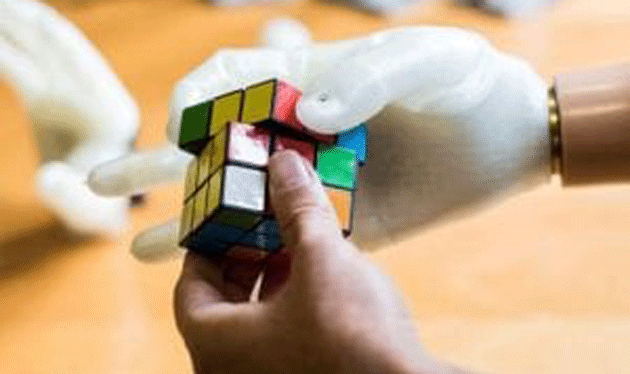Context
Advances in robotic hand neuroprostheses for amputees have expanded the variety of movements these devices can reproduce, without necessarily improving useability or wearability.
This project identified issues that deterred clients from wearing their prosthetics and designing a robotic hand that incorporates machine learning in its programming, allowing the prosthesis to adapt to the user’s capabilities, improving performance over time.

Solution
The robotic prosthetic offers the two hand grips that people use for 80 per cent of activities, as well as the ability to point, which reduces the neural effort required compared to devices with more options, also increasing the speed of the prosthetic’s response for the user.
The 3D printing of the prosthetic hand uses a flexible, medical grade thermoplastic that customises the design for a client, weighs less than its flesh and bone counterpart, and is 25 per cent lighter than the closest commercially available prosthetic, greatly improving wearability.
The project has also developed algorithms that allow the prosthetic to alter its performance in response to the user’s capabilities, as the user becomes increasing familiar with the device and its speed of response.
Impact
A highly wearable and prosthetic has been developed and successfully trialled with potential users, and the device is poised for commercial manufacture. This hand prosthetic uses a standard attachment and can easily be swapped with the hand element of existing arm and hand prosthetics. Research to further refine the model and adaptive robotics has been funded for a further five years.